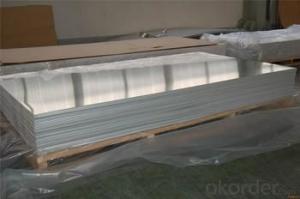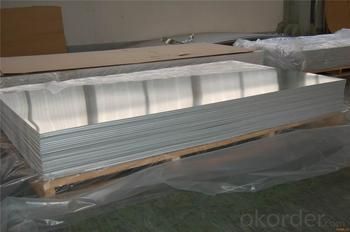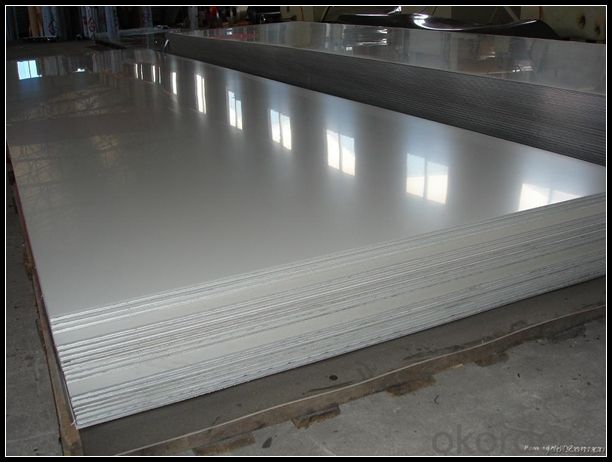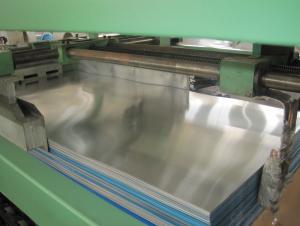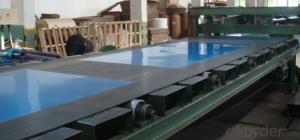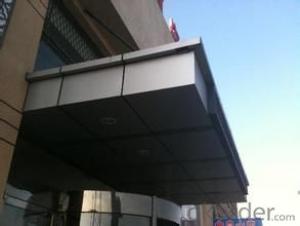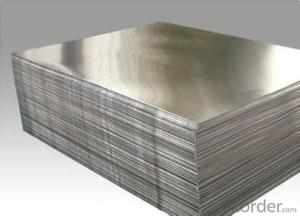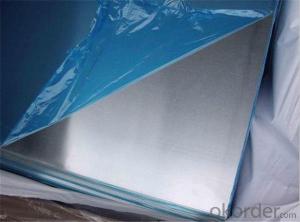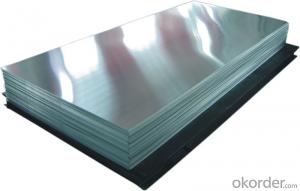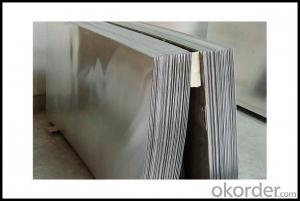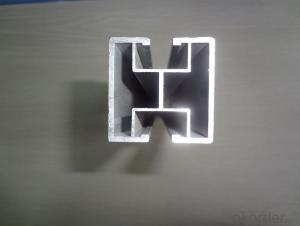Anodized Aluminum Sheets - Mill Finish Aluminum Plate with Prime Quality
- Loading Port:
- Shanghai
- Payment Terms:
- TT OR LC
- Min Order Qty:
- 5 m.t.
- Supply Capability:
- 1000 m.t./month
OKorder Service Pledge
OKorder Financial Service
You Might Also Like
Specification
1. Structure of Mill Finish Aluminium Plate With Prime Quality Description
Mill Finish Aluminium Plate With Prime Quality is one semi-finished aluminium material. This coil can be rolled down to aluminium coil,sheet,circle ect. The alloy AA1050 is widly used in building, industry ect. Its weight is much lower than steel. So many customers choosed aluminium material instead of steel.
2. Specification of Mill Finish Aluminium Plate With Prime Quality
Mill Finish Aluminium Plate With Prime Quality | |
Main Specification | |
Alloy | AA1xxx (AA1050, AA1060, AA1070, AA1100 etc.) |
AA3xxx (AA3003, AA3004, AA3005, AA3105 etc.) | |
AA5xxx, AA6XXX (AA5052,AA5083, AA5754, AA6061, AA6062 etc.) | |
AA8xxx(AA8011, AA8006 etc.) | |
Temper | H14,H16, H18, H22, H24, H26, H32,O/F, T4, T6, T651 |
Thickmess | 0.01mm-100mm |
Width | 30mm-1700mm |
Standard | GB/T 3880-2006/ASTM |
Special specification is available on customer's requirement | |
3. Application of Mill Finish Aluminium Plate With Prime Quality
(1).Interior: wall cladding, ceilings, bathrooms, kitchens and balconies, shutters, doors...
(2).Exterior: wall cladding, facades, roofing, canopies, tunnels,column covers , renovations...
(3).Advertisement: display platforms, signboards, fascia, shop fronts...
4. Feature of Mill Finish Aluminium Plate With Prime Quality
Surfact Quality :
Be free from Oil Stain, Dent, Inclusion, Scratches, Stain, Oxide Dicoloration, Breaks, Corrosion, Roll Marks, Dirt Streaks and other defect which will interfere with use,
Mechenical Property:
Chemical Composite and Mechanical Property
5. Certificate of Mill Finish Aluminium Plate With Prime Quality
SGS and ROHS(if client request, paid by client), MTC(plant provided), Certificate of Origin(FORM A, FORM E, CO), Bureau Veritas and SGS (if client request, paid by client), CIQS certificate
6. Image of Mill Finish Aluminium Plate With Prime Quality
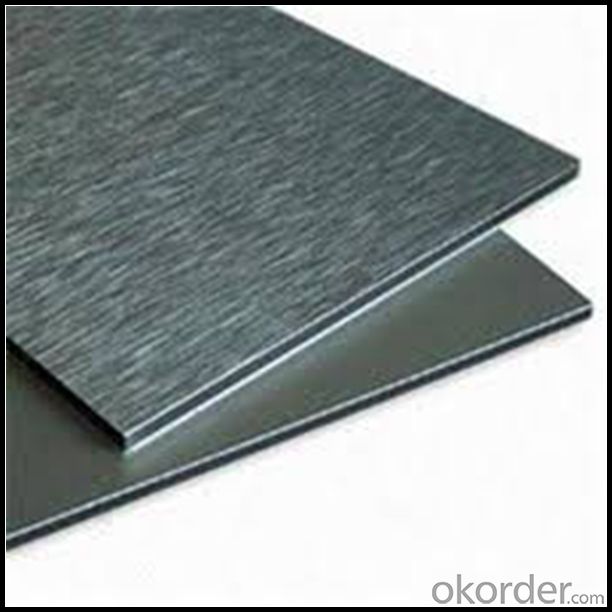
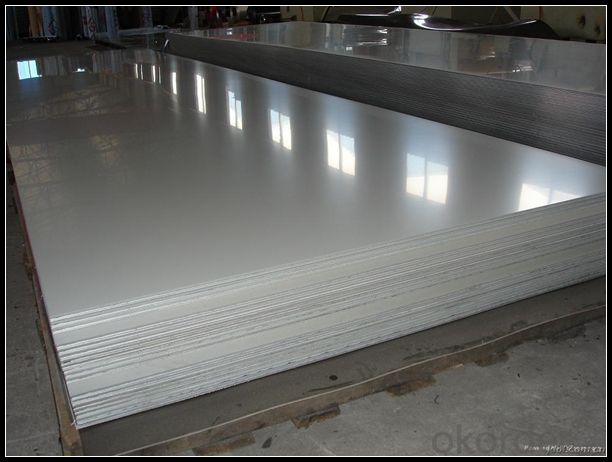
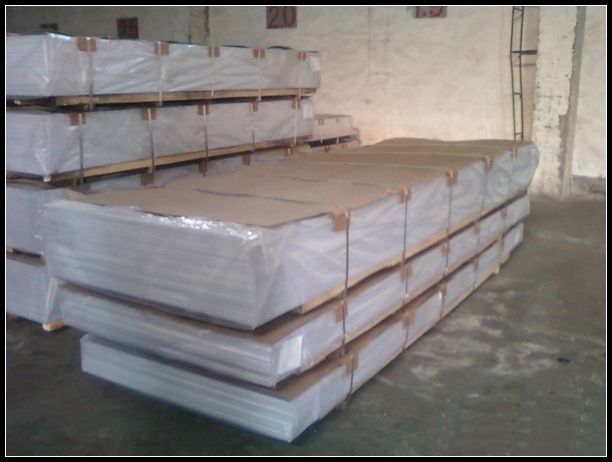
7. Package and shipping of Mill Finish Aluminium Plate With Prime Quality
First, plastic cloth with drying agent inside; Second, Pearl Wool ; Third, wooden cases with dry agent , fumigation wooden pallets, aluminum surface could cover blue PVC film
8. FAQ
1) What is the delivery time?
Depends on actual order, around 20 to 35 days
2) What is the QC system:
We have QC staff of 20 persons and advanced equipment, each production is with MTC traced from Aluminum ingot lot.
3) What market do you mainly sell to?
Australia, America, Asia, Middle East, Western Europe, Africa etc
- Q: What is the density of the 2A12 aluminum plate?
- 2.75 density. Shenzhen dexincheng metal plate is sold. Specifications are all complete.
- Q: For my chem class that I just barely started taking, we're making bohr models. Even though my teacher explained it, I still dont get the concept of it all, like how the protons are lined up in their inner circle and the outer circles. I get everythign else about atoms except how they're actually made up lol. Maybe someone on here can explain it to me? I hope so because i have to make a model for it for friday.The element I'm asigned is aluminum btwYour help is greatly appreciated!
- An atom is made up of protons. electrons and neutrons. The protrons and neutrons are located in the nucleus, while the electrons are located on the shells outside the nucleus. Think of the shells as orbits, orbits which can only hold a certain amount of electrons. In the Bohr's model of Aluminum there will be 2 elctrons on the first shell, 8 electrons on the second shell, and 3 electrons on the last shell.
- Q: What are the different surface patterns available for aluminum sheets?
- Aluminum sheets can have various surface patterns depending on the desired aesthetic and functional requirements. Some common surface patterns available for aluminum sheets include: 1. Smooth Finish: This is the most basic surface pattern, characterized by a flat and polished appearance. It is often used for applications where a clean and sleek appearance is desired, such as in architecture and interior design. 2. Stucco Embossed: This surface pattern features a raised texture resembling the look of stucco. It provides enhanced durability and slip resistance, making it suitable for applications that require a non-slip surface, such as stair treads or ramps. 3. Diamond Tread: This pattern consists of raised diamonds on the surface, providing superior traction and slip resistance. It is commonly used in applications where safety is a concern, such as on vehicle running boards or industrial flooring. 4. Hammered Finish: This surface pattern creates a textured appearance similar to that of hammered metal. It adds visual interest and can be used to enhance the aesthetics of architectural elements, decorative panels, or furniture. 5. Brushed Finish: Also known as satin finish, this pattern is achieved by brushing the surface of the aluminum sheet in a linear direction. It creates a smooth and consistent texture, often used for decorative purposes in applications like signage, wall cladding, or kitchen appliances. 6. Perforated: In this pattern, the aluminum sheet is punctured with small holes or slots in a specific design or pattern. It allows for airflow, light transmission, and sound absorption, making it suitable for applications like ventilation systems, acoustic panels, or decorative screens. These are just a few examples of the different surface patterns available for aluminum sheets. The choice of pattern depends on the intended use, desired appearance, and functional requirements of the application.
- Q: What are the applications of aluminum sheets?
- The unique properties and versatility of aluminum sheets make them applicable in a wide range of industries. Some common uses for aluminum sheets include: 1. Construction: Aluminum sheets are utilized in various construction applications such as roofing, siding, gutters, and facades. They offer exceptional durability, resistance to corrosion, and the ability to withstand extreme weather conditions. 2. Transportation: The transportation industry extensively employs aluminum sheets, particularly in the manufacturing of automobiles, airplanes, trains, and ships. Their lightweight nature helps reduce fuel consumption, improve vehicle performance, and maintain strength and durability. 3. Packaging: Aluminum sheets are widely used in the food and beverage industry for packaging purposes. They are used in the production of cans, foils, and containers due to their ability to protect the contents from light, moisture, air, and bacteria. 4. Electronics: Aluminum sheets play a role in the production of electronic devices like laptops, smartphones, and tablets. Their excellent thermal conductivity properties make them ideal for heat dissipation, ensuring the longevity and performance of electronic components. 5. Industrial applications: Aluminum sheets find applications in various industrial sectors, including aerospace, marine, chemical, and energy. They are used to manufacture heat exchangers, tanks, pipes, and other equipment due to their corrosion resistance and high strength-to-weight ratio. 6. Decorative purposes: Aluminum sheets are also used for decorative purposes in architecture and interior design. They can be easily shaped, colored, and textured to create attractive facades, wall panels, ceilings, and furniture. 7. Reflective surfaces: Aluminum sheets are commonly employed for their reflective properties. They are used in mirrors, solar panels, light fixtures, and reflective signage to enhance brightness and improve energy efficiency. In conclusion, the exceptional properties of aluminum sheets make them widely applicable in various industries. Their lightweight nature, durability, resistance to corrosion, and thermal conductivity make them the preferred choice for construction, transportation, packaging, electronics, industrial applications, decoration, and reflective surfaces.
- Q: Can aluminum sheets be used for water tanks?
- Water tanks can indeed utilize aluminum sheets. Thanks to its lightweight nature and resistance to corrosion, aluminum is an ideal material for water storage. Its durability and ability to fend off rust and corrosion have made it a popular choice in industries like aerospace and marine. Furthermore, aluminum tanks are simpler to transport and install in comparison to alternative materials, and they can endure high pressure and extreme temperatures. Nonetheless, it is crucial to guarantee that the aluminum sheets employed for water tanks are of exceptional quality and adhere to the required standards to uphold the tank's safety and longevity.
- Q: Can aluminum sheets be used for wall cladding?
- Indeed, wall cladding can utilize aluminum sheets. The lightweight quality, durability, and resistance to corrosion make aluminum a favored option for cladding materials. It is frequently employed in both commercial and residential constructions to enhance the external appearance of a structure with an appealing and contemporary aesthetic. The malleability and ease of fabrication of aluminum sheets enable the creation of diverse shapes and sizes, facilitating flexible design possibilities. Furthermore, aluminum cladding demands minimal maintenance, necessitating only sporadic cleaning and upkeep. In summary, aluminum sheets are a versatile and pragmatic selection for wall cladding.
- Q: The diameter of a hole drilled through aluminum at 22°C is 7.50 mm. Find the diameter and the area of the hole at 89°C.
- If i was once you, i might depart a small 1cm gap on the high and cover it with mesh - these round ones don't appear to allow a lot air flow in any respect in my viv and i have three... I have a tendency to simply leave the glass open a bit of at both aspect. You'll have got to use a great mesh although to stop bugs escaping via it. BTW - i think you will have to make it slightly deeper... 1.5 at least in case you are maintaining reps a good way to grow to 12inch plus.
- Q: Is it possible to use aluminum sheets in extreme weather conditions, including very hot and very cold temperatures?
- <p>Yes, aluminum sheets can be used in harsh environments, including hot and cold climates. Aluminum is known for its excellent corrosion resistance and durability, making it suitable for various weather conditions. It does not rust and maintains its strength in both low and high temperatures. However, it's important to consider the specific alloy and protective coatings used, as these can affect performance in extreme conditions. Properly treated and coated aluminum can withstand significant temperature fluctuations without significant degradation.</p>
- Q: Are the aluminum sheets corrosion-resistant?
- Yes, aluminum sheets are corrosion-resistant. Aluminum naturally forms a protective oxide layer when exposed to oxygen, which helps to prevent corrosion. This oxide layer acts as a barrier between the aluminum and the surrounding environment, making aluminum sheets highly resistant to corrosion. Additionally, aluminum sheets can be further treated with various coatings or anodizing processes to enhance their corrosion resistance even further. Therefore, aluminum sheets are a popular choice for applications where corrosion resistance is a critical requirement.
- Q: I put the aluminum in copper chloride for an experiment and i was wondering if they had different properites.
- Aluminium is and element. An oxide is the result of a substance reacting with oxygen. The properties are completely different for elements and oxides.
Send your message to us
Anodized Aluminum Sheets - Mill Finish Aluminum Plate with Prime Quality
- Loading Port:
- Shanghai
- Payment Terms:
- TT OR LC
- Min Order Qty:
- 5 m.t.
- Supply Capability:
- 1000 m.t./month
OKorder Service Pledge
OKorder Financial Service
Similar products
Hot products
Hot Searches
Related keywords
